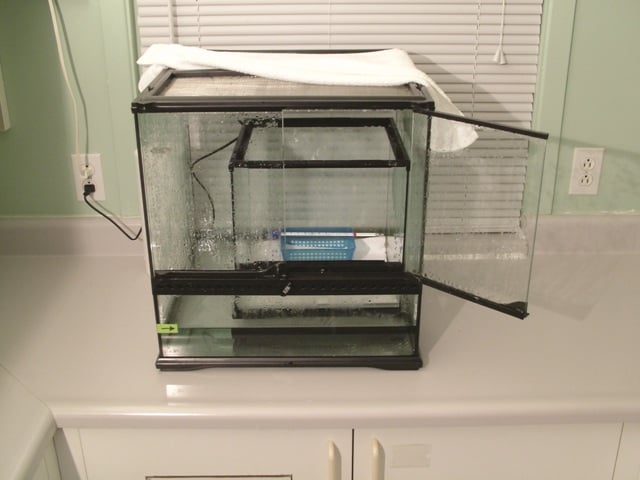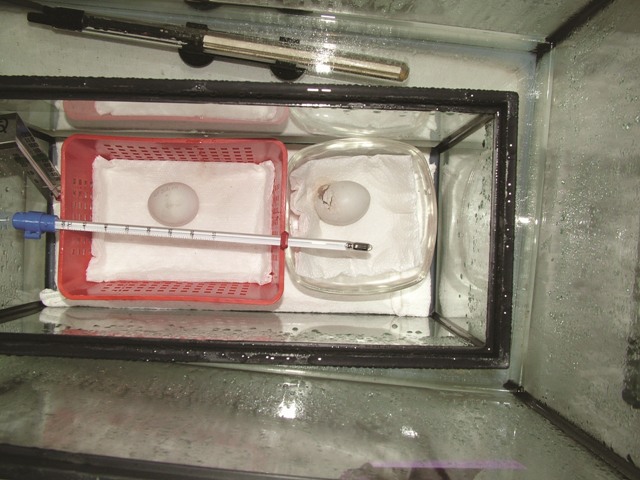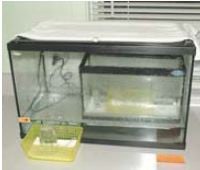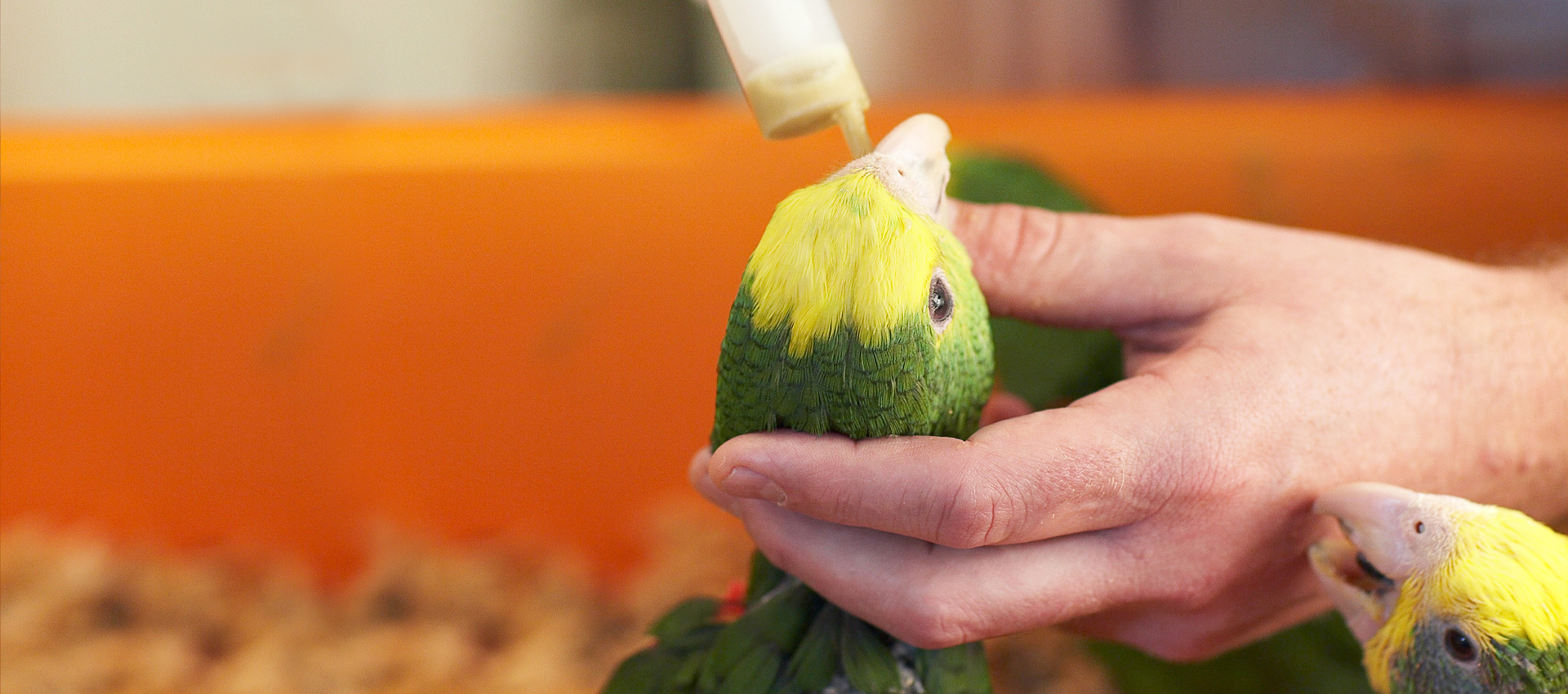Your cart is currently empty!

HARI Official Brand Site

This system has been successfully used at the HARI for many years. In order to provide the ideal environment for the hatching process and neonatal care, a system using wet-bulb heating was assembled using articles already available and manufactured for the pet market.
Having a heat source generated by heated water provides the humidity necessary for the hatching process. Artificially incubated eggs are removed from the incubator after the first sign of pipping is observed and the rest of the hatching process takes place in this unit.

In order to achieve the desired humidity and temperature, a towel is placed over the unit and can be adjusted to maintain the temperature & humidity desired. This unit also provides greater chances of success when forced to intervene and assist the hatching process. When the developmental stage of the egg reaches draw down and the egg starts the pipping process, transfer to this unit is ideal. If left in the incubator along with other eggs, the turning mechanism cannot be stopped, nor can you risk opening the incubator frequently to closely monitor the hatching process; temperature and humidity fluctuation could endanger the viability or development of the other eggs. Have an aqua brooder installed and operating at all times so that you are ready for the neglected parent raised chick, unexpected hatching or assist hatching intervention.

In order to maintain the desired temperature the chicks are placed in the floating 2.5 gal. aquarium inside of a smaller container. It is essential to monitor the temperature within the floating aquarium in order to have the accurate reading of the chicks’ environment.
This dual-purpose unit also serves as an ideal nursery for neonates. The environment provides the humidity required to maintain proper hydration of neonates, essential to ensure digestive motility and absorption.
• 10 gal. Aquarium
• 2.5 or 5 gal aquarium
• Thermal Compact completely submersible aquarium heater
• ¼ cup of Safety salt
• Thermometer
• Hydrometer
• Towel
• Rigid plastic container
• Screen top (terrarium)

Gradually decrease and adjust the ambient temp, as the chick ages. This unit can house neonates for the first 10 days depending on the species. Beware of extreme temperatures, which will cause panting and hyperthermia in the chicks.

Explore our list of commonly asked questions from fellow parrot owners just like yourself